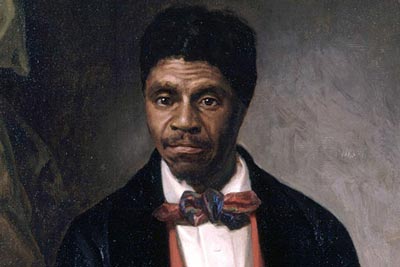
It’d be more than alarming and resoundingly condemned if any institution in the United States tried to take our country back to the days before Dred Scott, or to when people of color in this country fell under the racist and dehumanizing “three-fifths rule.” But the Supreme Court’s decision in Harris v. Quinn smacks of a new three-fifths rule by declaring the fastest growing occupation in the nation — an occupation dominated by people of color and women — as made up of “partial” or “quasi” public employees. The Harris decision, which concludes that workers who provide essential government services to the frail and elderly aren’t “full” public employees, is best understood in the context of two other seminal moments when U.S. lawmakers stacked the deck for employers and against people of color and women trying to improve their lot in life by forming strong unions.
In 1935, the National Labor Relations Act passed Congress, creating the legal architecture for workers to form unions. But in order to win enough votes for passage, Roosevelt and the law’s proponents compromised with racist Southern congressmen who demanded that domestic and agricultural workers, the two occupations dominated by blacks and women, be excluded from the provisions of the NLRA — thus condemning those communities to a second-class status under our nation’s first national labor law. White men in factories were given the right to form strong unions while people of color and women were formally held back.
Between 1935 and 1947, industrial workers built powerful unions, transforming bad jobs into middle-class work. The end of World War II brought the largest strike waves in U.S. history, as large numbers of returning veterans demanded dignity and basic rights in their workplaces after fighting for freedom abroad. From D-Day to 1947, five million American workers went on strike, demanding and winning much of what we now wistfully remember as the American Dream.
In 1947, some of the same corporate backers of the Harris v. Quinn decision delivered a knock-out blow to America’s workers when Congress passed the Taft-Hartley Act — a bill designed to shackle the growing strength of the working class through jail time and fines. The law systematically attacked two core constitutional freedoms of U.S. workers: the freedom to assemble and the freedom to speak. A key provision included banning so-called secondary strikes, forbidding workers from honoring each other’s picket lines. But Taft-Hartley did much more than eliminate the individual’s freedom to act in support of co-workers, neighbors or family members seeking a better life; it also enabled individual states to adopt so-called right-to-work laws, which bar workers from obligating co-workers to join a union or pay union dues, even in workplaces where a large majority of workers vote to form a union. All states which were previously slave-state strongholds quickly enacted the right-to-work framework, making sure black workers in their states wouldn’t build the kind of organizations that could challenge or significantly change a racist Jim Crow regime in the workplace. By the end of 1947, Arkansas, Florida, Georgia, North Carolina, Tennessee and Virginia were right-to-work, with the rest of the Southern states to follow not long afterward.
Harris v. Quinn takes aim at public-sector workers precisely because today they are the largest segment of unionized workers and, not coincidentally, a leading source of employment for people of color and women. The efforts of today’s economic elite to inflict a Taft-Hartley on the fastest-growing group of workers within public sector unions — home-care and childcare employees — seem like déjà vu.
The extreme right wing and its big business backers have put both the government and unions together in the bull’s eye. Meanwhile, liberals, who embrace the idea of government and denounce inequality in theory, are silent when it comes to supporting unions — or, worse, engage in anti-union banter as unthinkingly as they curse the weather. It’s past time for Americans who are concerned about inequality to stop the endless bashing of unionized workers and begin examining more closely who is really to blame for the economic and social mess we find ourselves in.
Are unions perfect? Heck no. Do they sometimes do themselves a disservice by their own behavior? Of course. But unions once pulled working-class Americans out of the poverty and social stagnation so many are now experiencing again. The conservative elite is attacking public-sector unions for the same reason it once attacked private-sector ones and has always attacked government: because unions and government do narrow the gap, and they tend to promote equality. We believers in the American dream are at an all-hands-on-deck moment. It’s time for the liberal elite to climb off the fence and side with America’s workers, and that means unions.
Our most important fundraising appeal of the year
December is the most critical time of year for Truthout, because our nonprofit news is funded almost entirely by individual donations from readers like you. So before you navigate away, we ask that you take just a second to support Truthout with a tax-deductible donation.
This year is a little different. We are up against a far-reaching, wide-scale attack on press freedom coming from the Trump administration. 2025 was a year of frightening censorship, news industry corporate consolidation, and worsening financial conditions for progressive nonprofits across the board.
We can only resist Trump’s agenda by cultivating a strong base of support. The right-wing mediasphere is funded comfortably by billionaire owners and venture capitalist philanthropists. At Truthout, we have you.
We’ve set an ambitious target for our year-end campaign — a goal of $250,000 to keep up our fight against authoritarianism in 2026. Please take a meaningful action in this fight: make a one-time or monthly donation to Truthout before December 31. If you have the means, please dig deep.